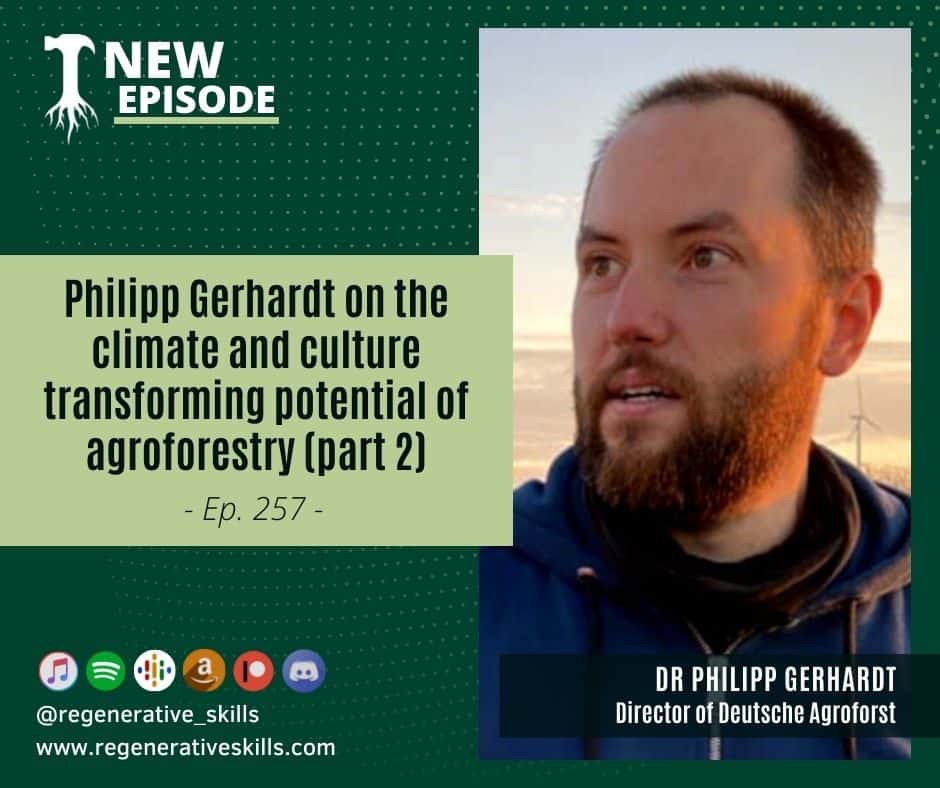
Welcome back to this ongoing series on tree planting and agroforestry. This week we’ll wrap up the two part interview I did with Philipp Gerhardt, the founder of the website baumfeldwirtschaft.de (which translates basically to tree farming) and managing director of Deutsche Agroforst GmbH. He is considered a leading expert for keyline design in Central Europe and is active in research projects and as a lecturer in seminars. As a pioneer in agroforestry, he has developed new approaches with his team to implement modern agroforestry and water management systems. Together they develop holistic concepts for protection against drought and floods for companies or municipalities with elements from Keyline Design and regenerative agriculture, and climate-friendly forest conversion. He has advised numerous companies that are changing the landscape in the long term and are building new climate-friendly ways of doing business.
As a quick recap of what we discussed in the first part of this interview, we covered some of the history and early innovators of the formal science of forestry. Philipp described his personal journey into the study of forest management and also permaculture and ecological restoration through keyline design as well as how all of these design concepts fit together. We also explored the potential for low density agroforestry planting over a large enough area to have a massive effect on the way we experience climate change on the ground. If you haven’t yet listened to the first half, I highly recommend that you check it out.
In this conclusion to our conversation, Philipp and I explore some of the unique roadblocks to implementing the scale of agroforestry needed to feel the difference in cooling and increased humidity. Philipp also breaks down some of the opportunities for funding at a national level in Germany and some ways he’s found to navigate the subsidy and regulation system there. That leads into an exploration of the career and business potential in forestry management and agroforestry as well as advice for people getting started in these fields or aspiring to work in ecological regeneration.
This is a great portion of the conversation for those of you who are looking into getting into these lines of work even if your funding and regulatory structures are different from those in Germany.
Join the discord discussion channel to answer the weekly questions and learn new skills with the whole community
Links:
